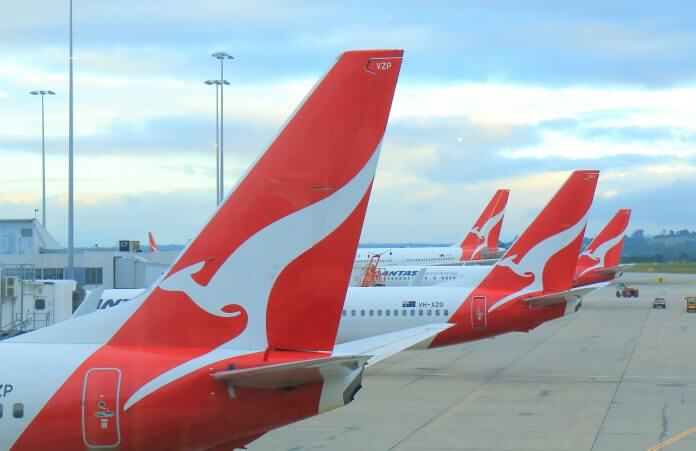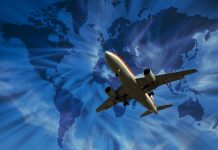 The number of passengers flying domestically in Australia each month has returned to pre-pandemic levels. However, growth in the total number of seats provided by domestic airlines has not kept pace with traveller demand, the ACCC’s latest Domestic Airline Competition report has found.
The number of passengers flying domestically in Australia each month has returned to pre-pandemic levels. However, growth in the total number of seats provided by domestic airlines has not kept pace with traveller demand, the ACCC’s latest Domestic Airline Competition report has found.
In June 2025, the number of seats flown by the major airlines was 2.8 percent lower than in June 2019. Although both the Qantas Group and Virgin Australia have increased capacity since 2019, the industry has not yet filled the gap left by Tigerair’s exit from the market in 2020. Furthermore, Rex has reduced capacity on its regional services over this time.
“The withdrawal of Tigerair in 2020 significantly reduced the capacity for low-cost travel from the domestic market,” ACCC Commissioner Anna Brakey said. “Since then, the lack of growth in seat capacity to meet rising demand has likely meant consumers are paying more than they would have in a more competitive, better-supplied market.”
Despite jet fuel prices falling by 12.3 per cent in the year to June 2025, the average airfare across all fare types was slightly higher in June 2025 than it was a year earlier.
After several years of delays in the delivery of aircraft and global supply chain issues, both the Qantas Group and Virgin Australia are expected to receive new aircraft in the second half of 2025.
The Qantas Group’s fleet will also increase following its decision to close Jetstar Asia, resulting in the redeployment of 13 aircraft to Australian and New Zealand routes.
Airlines have indicated that the new and redeployed aircraft will be used to replace leased and older aircraft in the first instance, before considering significant expansions in capacity.
Service reliability improves
The on-time performance rate for domestic air travel reached a three-year high in April 2025 following sustained industry efforts to improve the reliability of arrival times. Domestic flights arrived at their destination on-time 82.4 percent of the time in April, with Jetstar, Qantas and Virgin Australia all beating the long-term industry average of 80.7 percent.
In April and May, Virgin Australia recorded the best on-time arrival rate for any domestic airline since February 2022, when its flights arrived on-time 84.4 per cent and 84.8 per cent of the time, respectively.
“This improvement in on-time performance is good news for travellers as they can have more confidence that their flight will arrive at their destination at the time they booked,” Brakey said. “The improved performance follows a collective effort by airlines, air traffic controller Airservices Australia and airports.”
Airline on-time performance rates (arrivals) – June 2023 to June 2025

Source: BITRE, On-time performance time series – June 2025. Qantas figures include QantasLink and Virgin Australia figures include VARA. Note: A flight is considered on-time if it arrives within 15 minutes of the scheduled arrival time shown on the airline’s schedule.
Cancellation rates have also improved and were below the long-term industry average of 2.2 per cent in April and May before increasing slightly to 2.4 percent in June. This improvement was largely driven by strong performance by Virgin Australia and Jetstar. In April, both airlines cancelled just 0.7 per cent of their domestic flights. Qantas’ cancellation rate continues to be higher than other airlines and on average has been more than double the cancellation rate of Jetstar and Virgin Australia over the quarter to June. “We will continue to closely monitor cancellation rates on all routes and expect airlines to make improvements where cancellation rates are high to minimise disruptions for travellers,” Brakey said.
Airline cancellation rates
| Airline | April 2025 (%) | May 2025 (%) | June 2025 (%) |
| Qantas | 2.7 | 2.9 | 3.5 |
| Jetstar | 0.7 | 1.3 | 1.1 |
| Virgin Australia | 0.7 | 0.8 | 1.6 |
| Rex | 1.9 | 3.0 | 2.3 |
| Industry average | 2.0 | 2.1 | 2.4 |
| Long-term industry average | 2.2 | 2.2 | 2.2 |
Source: BITRE, On-time performance time series – June 2025. Qantas figures include QantasLink and Virgin Australia figures include VARA.
Consumers should re-evaluate frequent flyer programmes
This quarter’s report includes an analysis of airline frequent flyer programmes. Frequent flyer programmes are big business in Australia and contribute significant revenue to both the Qantas Group and Virgin Australia. As of December 2024, Qantas Frequent Flyer had 17.0 million members and Virgin Australia’s Velocity Frequent Flyer had 12.9 million members. These programmes encourage consumers to book with a specific airline by offering customers exclusive benefits such as reward flights, seat upgrades, access to airport lounges, and other goods and services.
“While these programmes can offer appealing benefits to consumers, they also come with certain drawbacks that consumers should consider before preferencing a particular airline in pursuit of points and status credits,” Brakey said. “We encourage consumers to look into how frequent flyer programs operate and weigh the potential benefits of frequent flyer points or status credits against the cost of flights when choosing fares. Points may lose value, expire or be difficult to redeem. Similarly, airlines can change the number of status credits required to reach or maintain a higher tier.”



















